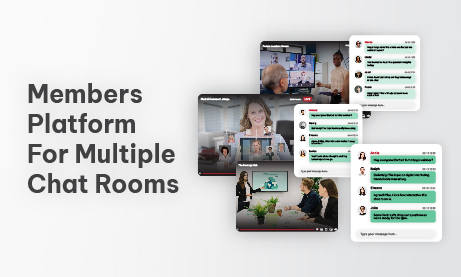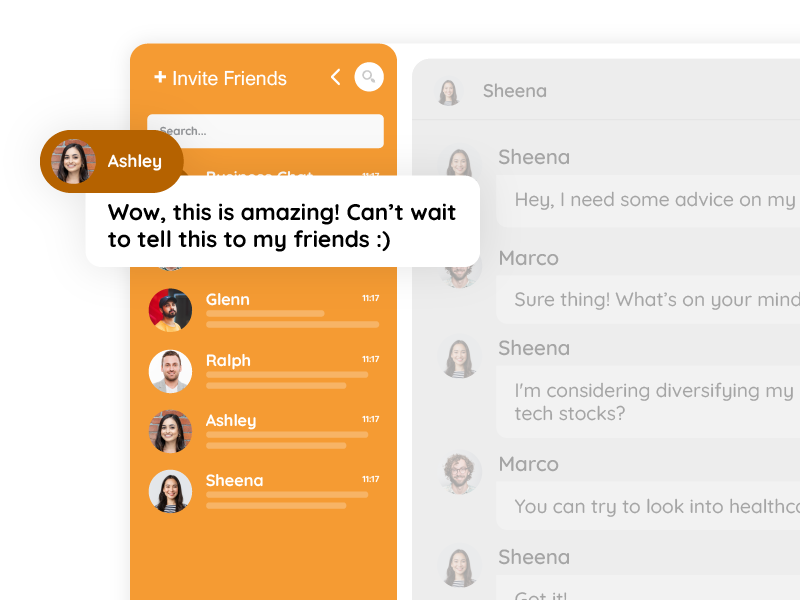In today’s digital landscape, members platforms are the go-to solution for communities, course creators, influencers, and entrepreneurs. They allow you to deliver content, manage subscriptions, and build a following. But if you’re not offering multiple chat rooms through a real-time group chat system, you’re leaving a huge gap in your user experience.
Let’s talk about what happens when your platform doesn’t include group chat, and especially when it doesn’t support multiple topic-based chat rooms. Because here’s the truth:
Without chat, your members aren’t a community. They’re just users.
In this article, we’ll dive into the hidden costs of skipping chat, and how embracing a modern members platform for multiple chat rooms can transform engagement, retention, and value.
1. One-Way Communication Isn’t Enough Anymore
You might have a great content flow: new videos, lessons, webinars, PDFs. But if your members can only consume content and not react to it in real-time with others? It’s a one-way street.
Group chat opens the door to:
- Real-time reactions and support
- Peer collaboration
- Topic-specific discussions
This is even more powerful when you break it into multiple chat rooms:
- A room for general discussion
- A room per course/module/topic
- VIP-only spaces
- Tech support rooms
Each room has a purpose. Each room helps reduce noise and increase relevance.
2. Forums and Comments Don’t Build Momentum
Some platforms rely on comment sections or discussion boards. But let’s face it; these are slow, fragmented, and rarely visited twice.
A members platform for multiple chat rooms allows you to:
- Organize conversation streams
- Keep momentum with real-time activity
- Separate long-term topics from fast-moving discussions
Think of it as the difference between posting on a bulletin board vs walking into a buzzing room full of people talking.
3. You’re Losing Daily Active Users
Every platform wants stickiness. But if users log in once a week just to check content, you’re not building a habit.
Chat changes that.
With group chat, members show up to:
- See what’s happening
- Ask questions
- Offer support
- Join daily rituals or challenges
When you have multiple rooms tailored to their interests, your platform becomes part of their routine.
4. Built-In Chat Lacks Flexibility
Some membership platforms come with limited built-in chat tools. But these are often:
- Hard to customize
- Not scalable to multiple rooms
- Lacking in moderation tools
By integrating an external group chat solution with SDK or API support, you gain:
- Total design control
- Room management features
- Role-based permissions
- Analytics and moderation
SDK Login Example
var chat_login = {
user: {
id: "member_001",
name: "Sarah M.",
avatar: "https://myplatform.com/images/sarah.jpg",
role: "premium"
},
hash: "secure_hash_from_backend"
};
This enables seamless auto-login using your platform’s authentication.
5. Fragmented Communities = Lost Engagement
If you don’t offer group chat, your users will find their own way. That means:
- A Discord server you don’t control
- A WhatsApp group with no oversight
- Siloed experiences that lose your brand context
When users leave your platform to communicate, you lose:
- Data
- Insight
- Branding
- Control
A native, embedded chat with multiple rooms keeps the experience centralized and cohesive.
6. One Chat Room Is Never Enough
Let’s say you add a single chat room. That’s a start, but it quickly becomes chaotic.
Multiple chat rooms help segment your community:
- New members get an onboarding chat
- Advanced users discuss niche topics
- Events have dedicated pop-up rooms
- Support questions don’t clog general chat
This structure reduces overwhelm and improves the quality of each interaction.
REST API Example for Room Creation
POST /api/rooms
{
"name": "Weekly Mastermind",
"design": "clean_theme",
"max_users": 100,
"visibility": "private"
}
With API access, your backend can dynamically generate rooms based on user groups, purchases, or course progress.
7. You’re Missing Opportunities to Monetize
Chat is more than conversation. It’s a monetization engine.
Here’s how:
- Create VIP chat rooms for paying members
- Host live Q&A with upsell offers
- Share gated content via chat
- Add donation, tipping, or product buttons
Imagine selling your next workshop right in the pinned message of your event chat.
8. Real Community Needs Real Moderation
When you add chat, you also need to moderate it. External group chat solutions allow:
- Profanity filtering
- Banned word lists
- Role-based access
- Real-time alerts for flagged content
And with multiple chat rooms, moderation is even more critical.
You can assign different moderators per room, each focused on a niche they understand.
9. Data Is Gold — Don’t Miss Out
A good chat solution gives you insight into:
- Daily active users
- Most active topics
- When your community peaks
With chat logs and behavior patterns, you can:
- Improve content timing
- Launch topics users actually want
- Track user journeys and lifecycle stages
You’re no longer guessing; you’re informed.
10. Social Connection Boosts Retention
At the end of the day, people stay where they feel seen and heard.
Chat rooms create that connection.
- New users feel welcomed
- Regulars find their tribe
- Everyone has a voice
Your content keeps them coming. Your chat keeps them staying.
Final Thoughts: It’s Time to Level Up
If your members platform doesn’t have real-time chat, it’s not truly a community. It’s a dashboard.
When you add multiple chat rooms to your platform, you:
- Boost engagement
- Increase retention
- Unlock monetization
- Centralize experience
- Build connection
And that’s the real value your members are looking for.




